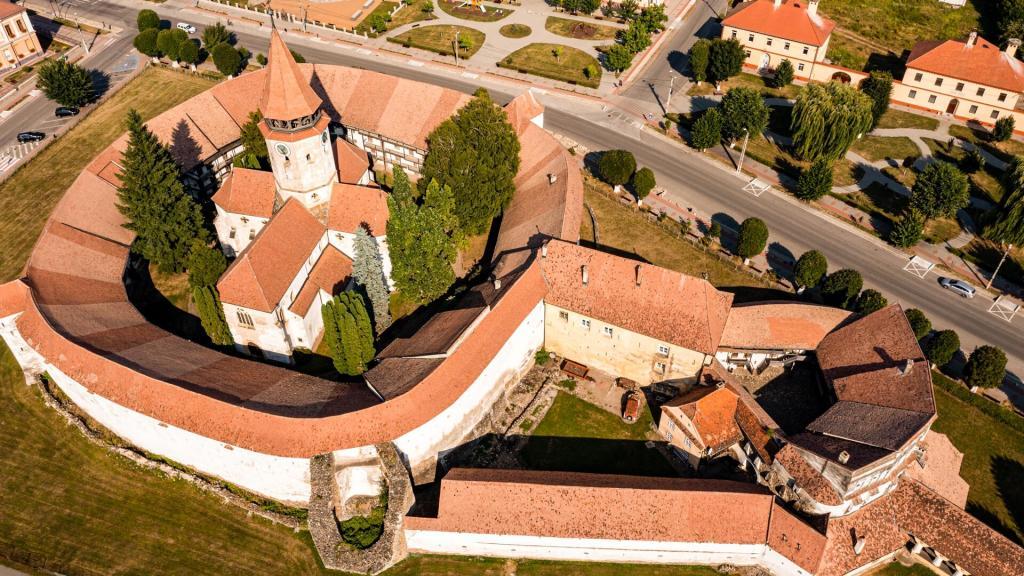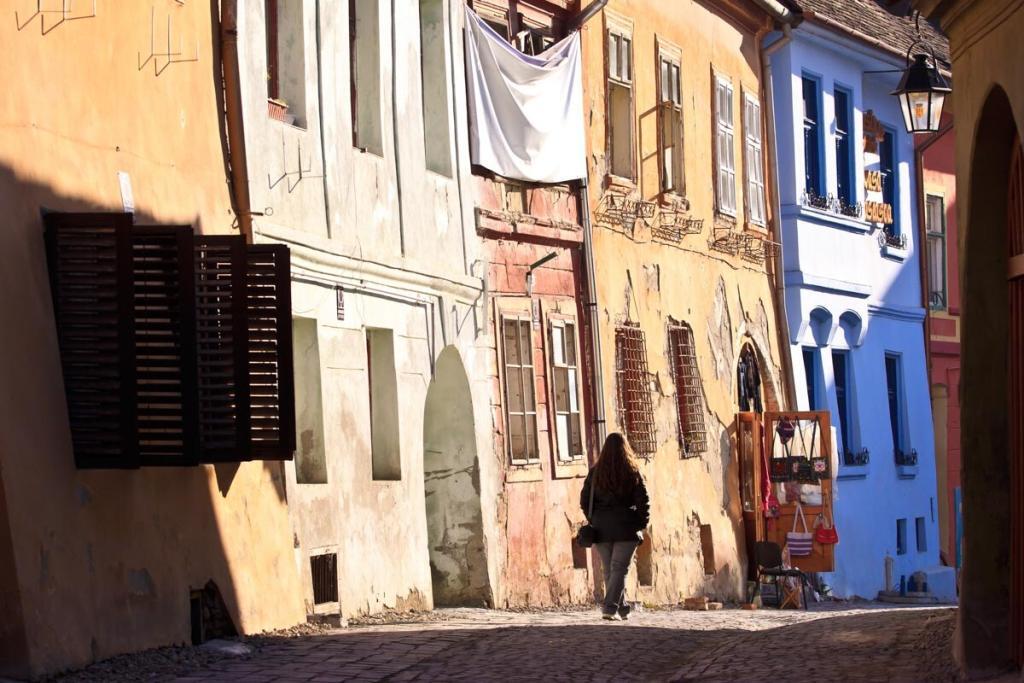The village of Viscri, or Weisskhirch (in Romanian “white church”), as it was formerly known, is less than two-hour drive from Brasov. The village was included in the UNESCO heritage list in 1999 and features on the world map of traditional villages. The road up there is dotted with plenty of attractions, so if you leave Brasov in the morning, you might only reach Viscri in the afternoon. You certainly won’t be sorry for the delay, because on the way you can visit the fortresses in Feldioara and Rupea or the fortified churches in Homorod and Bunești. Or you can take a short detour to Racoș, where a beautiful lake, dramatic limestone columns, and a picturesque little castle are waiting for you! But more about that in a different story!
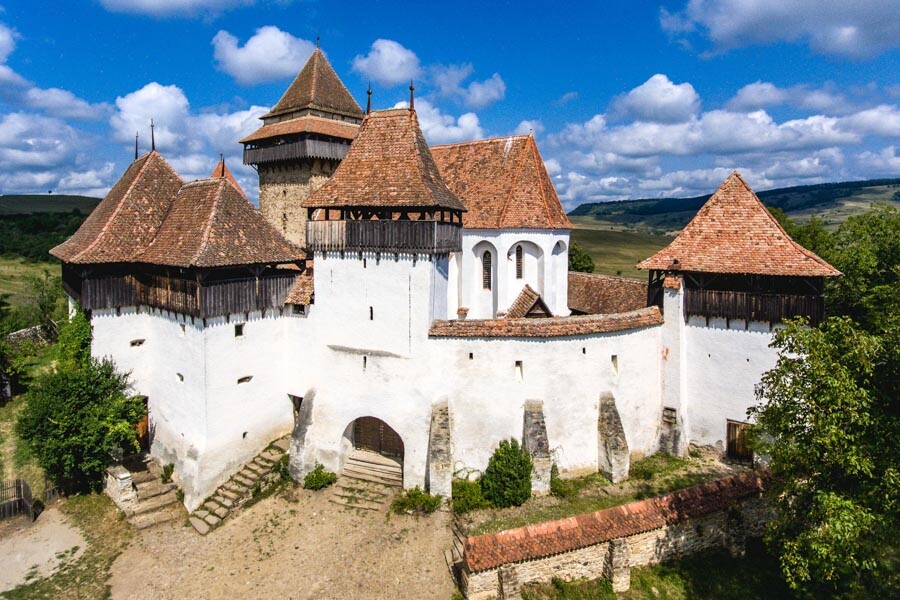
Let’s return to Viscri: why did Viscri village become famous? Viscri is where you discover the sound and taste of the authentic Transylvanian Saxon villages. This small settlement was founded in the 12th century when Saxon settlers were brought in on the orders of the Hungarian king to defend the Transylvanian mountain passes against invaders. They settled here for eight centuries building and defending their homes, churches and fortresses and creating a unique culture that seemed to last forever. Then communism happened and it triggered one of the largest peacetime migrations of the XXth century. More than a quarter of a million Saxons left their villages to Germany, leaving behind desolation and empty villages.
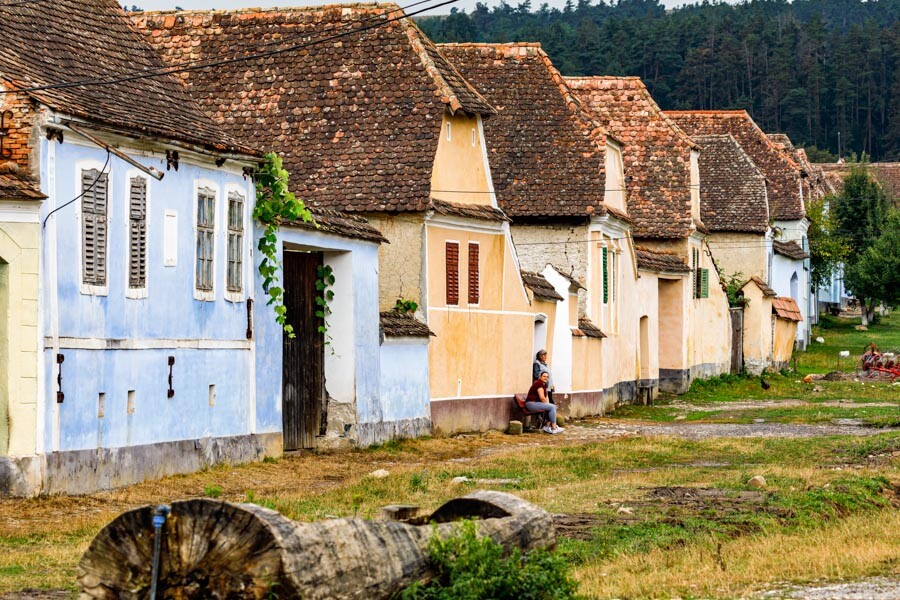
Viscri was almost abandoned, with the lovely fortified church in danger of collapsing at any moment. In an amazing turn of events, Prince Charles, the heir of the British throne, showed public concern for the area and the village, with just under 500 inhabitants, and local tourism gained an unexpected influx of tourists. Prince Charles fell in love with Transylvania on his very first visit to Romania in 1998. Having bought a house in Viscri, he became involved in local life and, together with the handful of Saxons left in the area, set up the local subsidiary of the “Prince of Wales Foundation”, developing programs to preserve architectural heritage, by restoring abandoned houses and bringing them into the tourism circuit.
Prince Charles admired Viscri for the way life has remained unchanged here for hundreds of years. When he first visited Romania, Prince of Wales was impressed by the traditions and the landscape, similar to the fairy tales he used to read as a child. This is the reason why, while most of the deserted houses have been restored and the roads modernized, local traditions continue to be respected. The villagers work together for the community and help each other so everyone wins. Together with the Foundation and His Royal Highness’s support, the locals, Rroma and Romanians, learned how to restore the houses abandoned by the Saxon villagers and preserve the specific character of the area. Moreover, the Prince ensured the Foundation will support them in carrying out rehabilitation projects for more villages in Transylvania.

Viscri locals are now being encouraged to promote their ancestral lifestyle in order to attract tourists. There are currently many guesthouses run by locals. All of them comply with the local specific architecture style. They offer all modern amenities, and yet the furniture is typical for this area and the cooking is traditional. While the men in the village are in charge with repair works and restoration, the women are busy with preparing food, needlework and knitting. The items made by them can be purchased not only from the small stalls outside the gates but also from boutiques in the UK or Germany. Workshops for traditional restoration techniques, felting, basket weaving and farming are also held in Viscri.

Prince Charles bought his first house in Romania, in Viscri, in 2006, paying £12,000 for it. It is called the Blue House after the blue lime paint applied to its façade. He later bought other properties in the village of Valea Zălanului in Covasna, in the village of Mălâncrav, Sibiu county, and in the village of Breb in Maramureș. When not frequented by Prince Charles and his entourage, the houses in Romania can be rented out. The places where the Heir to the British Throne owns properties have become popular for both Romanian and foreign tourists, following in the footsteps of a future king for a unique traditional experience.
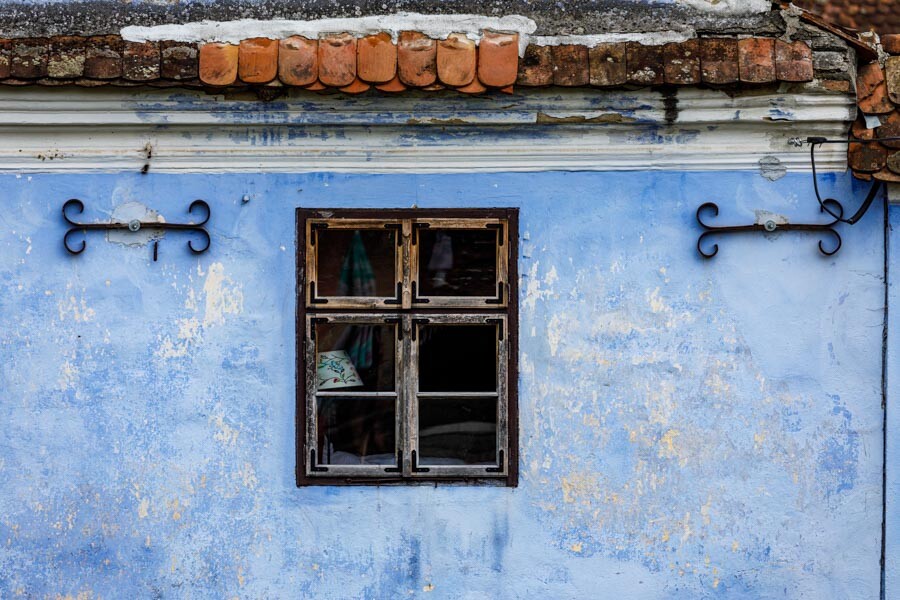
Briefly, this is what one can do in Viscri: visit the fortified church and wander around the village, visit the traditional handicraft workshops and buy felted or knitted products, off-road bike experience in the surrounding forests, spend some time in an old Saxon house and eating hearty local food. If staying overnight, you can enjoy a real parade in the evenings. That’s the time of the day when more than 300 cows are returning home from the meadows, along with goats, horses, and herds of naughty geese. On the most sought-after list of attractions is the horse and cart ride. Also not to be missed are the visits to the craftsmen’s workshops, cooking classes and truffle hunting in the woods surrounding the village.
Our tip is to visit Viscri on weekdays. Unfortunately, on summer weekends, the village can be overrun by large numbers of domestic tourists, turning the charming village into a noisy, traffic-filled car park. As Viscri is small and everything is walkable, make sure you wear comfy shoes to visit around. And if you have the time and want to join in the local activities, it’s better to call in advance and make an appointment. Or more simply, contact us to organize your trip to Viscri!

